Assessment of Land Deformation and the Associated Causes along a Rapidly Developing Himalayan Foothill Region Using Multi-Temporal Sentinel-1 SAR Datasets
Abstract
:1. Introduction
2. Study Area and Dataset Description
2.1. Study Area
2.2. Dataset Details
2.2.1. Sentinel-1 Datasets
2.2.2. Auxiliary Datasets
3. Methodology and Implementation
3.1. Time Series Sentinel-1 Dataset Pre-Processing and StaMPS-Based PsInSAR Implementation
3.2. Analysis of Land Deformation Causes
4. Results and Discussion
4.1. Land Deformation Analysis in the Region
4.2. Assessment of Various Factors Leading to Land Deformation
5. Conclusions
Author Contributions
Funding
Data Availability Statement
Acknowledgments
Conflicts of Interest
References
- Feng, Q.-Y.; Liu, G.-J.; Meng, L.; Fu, E.-J.; Zhang, H.-R.; Zhang, K.-F. Land Subsidence Induced by Groundwater Extraction and Building Damage Level Assessment—A Case Study of Datun, China. J. China Univ. Min. Technol. 2008, 18, 556–560. [Google Scholar] [CrossRef]
- Data Application of the Month: Land Deformation Mapping Using Dinsar|Un-Spider Knowledge Portal. Available online: Https://www.un-spider.org/links-and-resources/data-sources/daotm-land-deformation (accessed on 22 October 2022).
- Tangdamrongsub, N.; Šprlák, M. the Assessment of Hydrologic- and Flood-Induced Land Deformation in Data-Sparse Regions Using Grace/Grace-Fo Data Assimilation. Remote Sens. 2021, 13, 235. [Google Scholar] [CrossRef]
- Kumar, A.; Manisha; Lal, P.; Prasad, A.; Tripathy, P.; Saikia, P. Analyzing Urban Damage and Surface Deformation Based Hazard-Risk in Kathmandu City Occurred During Nepal Earthquake (2015) Using Sar Interferometry. Adv. Space Res. 2022. [Google Scholar] [CrossRef]
- Bhattacharjee, S.; Kumar, P.; Thakur, P.K.; Gupta, K. Hydrodynamic Modelling and Vulnerability Analysis to Assess Flood Risk in A Dense Indian City Using Geospatial Techniques. Nat. Hazards 2021, 105, 2117–2145. [Google Scholar] [CrossRef]
- Awasthi, S.; Jain, K.; Bhattacharjee, S.; Gupta, V.; Varade, D.; Singh, H.; Narayan, A.B.; Buddilon, A. Analyzing Urbanization Induced Groundwater Stress and Land Deformation Using Time-Series Sentinel-1 Datasets Applying Psinsar Approach. Sci. Total Environ. 2022, 844, 157103. [Google Scholar] [CrossRef]
- Simkin, R.D.; Seto, K.C.; Mcdonald, R.I.; Jetz, W. Biodiversity Impacts and Conservation Implications of Urban Land Expansion Projected to 2050. Proc. Natl. Acad. Sci. USA 2022, 119, e2117297119. [Google Scholar] [CrossRef] [PubMed]
- Huang, K.; Li, X.; Liu, X.; Seto, K.C. Projecting Global Urban Land Expansion and Heat Island Intensification Through 2050. Environ. Res. Lett. 2019, 14, 114037. [Google Scholar] [CrossRef] [Green Version]
- Barredo, J.I.; Demicheli, L. Urban Sustainability in Developing Countries’ Megacities: Modelling and Predicting Future Urban Growth in Lagos. Cities 2003, 20, 297–310. [Google Scholar] [CrossRef]
- Awasthi, S.; Jain, K.; Mishra, V.; Kumar, A. An Approach for Multi-Dimensional Land Subsidence Velocity Estimation Using Time-Series Sentinel-1 Sar Datasets by Applying Persistent Scatterer Interferometry Technique. Geocarto Int. 2020, 37, 2647–2678. [Google Scholar] [CrossRef]
- Goldbeck, N.; Angeloudis, P. Unlocking the Potential of Future Cities Through Sustainable and Resilient Infrastructure. In Defining the Urban: Interdisciplinary and Professional Perspectives; Routledge: London, UK, 2018; pp. 128–140. [Google Scholar]
- Orhan, O. Monitoring of Land Subsidence Due to Excessive Groundwater Extraction Using Small Baseline Subset Technique in Konya, Turkey. Environ. Monit. Assess. 2021, 193, 174. [Google Scholar] [CrossRef]
- Carlson, G.; Shirzaei, M.; Werth, S.; Zhai, G.; Ojha, C. Seasonal and Long-Term Groundwater Unloading in the Central Valley Modifies Crustal Stress. J. Geophys. Res. Solid Earth 2020, 125, e2019jb018490. [Google Scholar] [CrossRef] [Green Version]
- Awasthi, S.; Varade, D.; Thakur, P.K.; Kumar, A.; Singh, H.; Jain, K. Development of A Novel Approach for Snow Wetness Estimation Using Hybrid Polarimetric Risat-1 Sar Datasets in North-Western Himalayan Region. J. Hydrol. 2022, 612, 128252. [Google Scholar] [CrossRef]
- Novellino, A.; Cigna, F.; Brahmi, M.; Sowter, A.; Bateson, L.; Marsh, S. Assessing the Feasibility of a National Insar Ground Deformation Map of Great Britain with Sentinel-1. Geosciences 2017, 7, 19. [Google Scholar] [CrossRef] [Green Version]
- Arangio, S.; Calò, F.; Di Mauro, M.; Bonano, M.; Marsella, M.; Manunta, M. An Application of the Sbas-Dinsar Technique for the Assessment of Structural Damage in the City of Rome. Struct. Infrastruct. Eng. 2014, 10, 1469–1483. [Google Scholar] [CrossRef]
- Zhao, C.Y.; Zhang, Q.; Yang, C.; Zou, W. Integration of Modis Data and Short Baseline Subset (Sbas) Technique for Land Subsidence Monitoring in Datong, China. J. Geodyn. 2011, 52, 16–23. [Google Scholar] [CrossRef]
- Crosetto, M.; Monserrat, O.; Cuevas-González, M.; Devanthéry, N.; Crippa, B. Persistent Scatterer Interferometry: A Review. Isprs J. Photogramm. Remote Sens. 2016, 115, 78–89. [Google Scholar] [CrossRef] [Green Version]
- Awasthi, S.; Jain, K.; Pandey, A. Psinsar Based Land Deformation Based Disaster Monitoring Using Sentinel-1 Datasets. In Proceedings of the Igarss 2019–2019 IEEE International Geoscience and Remote Sensing Symposium, Yokohama, Japan, 28 July–2 August 2019; pp. 1713–1716. [Google Scholar]
- Nazir Zaz, S.; Ahmad Romshoo, S.; Thokuluwa Krishnamoorthy, R.; Viswanadhapalli, Y. Analyses of Temperature and Precipitation in the Indian Jammu and Kashmir Region for the 1980-2016 Period: Implications for Remote Influence and Extreme Events. Atmos. Chem. Phys. 2019, 19, 15–37. [Google Scholar] [CrossRef] [Green Version]
- Singh, H.; Varade, D.; Mishra, P.K. Cloudburst Events in the Indian Himalayas: A Historical Geospatial PerspectiveInternational Handbook of Disaster ResearchSpringer: Singapore, 2022.
- Kumar, A.; Asthana, A.K.L.; Priyanka, R.S.; Jayangondaperumal, R.; Gupta, A.K.; Bhakuni, S.S. Assessment of Landslide Hazards Induced by Extreme Rainfall Event in Jammu and Kashmir Himalaya, Northwest India. Geomorphology 2017, 284, 72–87. [Google Scholar] [CrossRef] [Green Version]
- Phartiyal, G.S.; Kumar, K.; Singh, D. An Improved Land Cover Classification Using Polarization Signatures for Palsar 2 Data. Adv. Space Res. 2020, 65, 2622–2635. [Google Scholar] [CrossRef]
- Chaudhary, S.K.; Srivastava, P.K.; Gupta, D.K.; Kumar, P.; Prasad, R.; Pandey, D.K.; Das, A.K.; Gupta, M. Machine Learning Algorithms for Soil Moisture Estimation Using Sentinel-1: Model Development and Implementation. Adv. Space Res. 2022, 69, 1799–1812. [Google Scholar] [CrossRef]
- Awasthi, S.; Mishra, V.; Jain, K. Ground Water Monitoring Utilizing Time Series Sar Interferometric Psinsar Technique Combining Ascending and Descending Pass Datasets. In Proceedings of the Agu Fall Meeting Abstracts, Washington, DC, USA, 10–14 December 2018; Volume 2018, p. Nh21c-0841. [Google Scholar]
- Hooper, A. A Multi-Temporal Insar Method Incorporating Both Persistent Scatterer and Small Baseline Approaches. Geophys. Res. Lett. 2008, 35, L16302. [Google Scholar] [CrossRef] [Green Version]
- Solari, L.; Del Soldato, M.; Bianchini, S.; Ciampalini, A.; Ezquerro, P.; Montalti, R.; Raspini, F.; Moretti, S. From Ers 1/2 to Sentinel-1: Subsidence Monitoring in Italy in the Last Two Decades. Front. Earth Sci. 2018, 6, 149. [Google Scholar] [CrossRef]
- Tomás, R.; Romero, R.; Mulas, J.; Marturià, J.J.; Mallorquí, J.J.; Lopez-Sanchez, J.M.; Herrera, G.; Gutiérrez, F.; González, P.J.; Fernández, J.; et al. Radar Interferometry Techniques for the Study of Ground Subsidence Phenomena: A Review of Practical Issues Through Cases in Spain. Environ. Earth Sci. 2014, 71, 163–181. [Google Scholar] [CrossRef] [Green Version]
- Awasthi, S.; Varade, D. Recent Advances in the Remote Sensing of Alpine Snow: A Review. Gisci. Remote Sens. 2021, 58, 852–888. [Google Scholar] [CrossRef]
- Bamler, R.; Hartl, P. Synthetic Aperture Radar Interferometry. Inverse Probl. 1998, 14, R1–R54. [Google Scholar] [CrossRef]
- Awasthi, S.; Kumar, S.; Thakur, P.K.; Jain, K.; Kumar, A. Snehmani Snow Depth Retrieval in North-Western Himalayan Region Using Pursuit-Monostatic Tandem-X Datasets Applying Polarimetric Synthetic Aperture Radar Interferometry Based Inversion Modelling. Int. J. Remote Sens. 2021, 42, 2872–2897. [Google Scholar] [CrossRef]
- Rocca, F.; Tebaldini, S.; Ho Tong Minh, D. Airborne and Satellite Sar Tomography: A Tool to Investigate Forests and Glaciers Structures. Ann. Gis 2016, 22, 103–112. [Google Scholar] [CrossRef]
- Lee, J.-S.; Pottier, E. Polarimetric Radar Imaging: From Basics to Applications; CRC Press: Boca Raton, FL, USA, 2009; ISBN 9781420054972. [Google Scholar]
- Awasthi, S.; Kumar, S.; Thakur, P.K.; Mani, S. Pol-Insar Based Snow Depth Retrieval Using Spaceborne Terrasar-X Data. In Proceedings of the 2017 8th International Conference on Computing, Communication and Networking Technologies (ICCCNT), Delhi, India, 3–5 July 2017; pp. 1–7. [Google Scholar]
- Krishnakumar, V.; Monserrat, O.; Crosetto, M.; Crippa, B. Atmosphere Phase Delay in Sentinel Sar Interferometry. In Proceedings of the ISPRS Tc Iii Mid-Term Symposium, Beijing, China, 7–10 May 2018; pp. 741–744. [Google Scholar]
- Zebker, H.A.; Rosen, P.A.; Hensley, S. Atmospheric Effects in Interferometric Synthetic Aperture Radar Surface Deformation and Topographic Maps. J. Geophys. Res. Solid Earth 1997, 102, 7547–7563. [Google Scholar] [CrossRef]
- Hanssen, R.F. Radar Interferometry: Data Interpretation and Error Analysis; Springer Science & Business Media: Dordrecht, The Netherlands, 2001; ISBN 0792369459. [Google Scholar]
- Shanker, P.; Casu, F.; Zebker, H.A.; Lanari, R. Comparison of Persistent Scatterers and Small Baseline Time-Series Insar Results: A Case Study of the San Francisco Bay Area. IEEE Geosci. Remote Sens. Lett. 2011, 8, 592–596. [Google Scholar] [CrossRef]
- Awasthi, S.; Thakur, P.K.; Kumar, S.; Kumar, A.; Jain, K.; Mani, S. Snow Density Retrieval Using Hybrid Polarimetric Risat-1 Datasets. IEEE J. Sel. Top. Appl. Earth Obs. Remote Sens. 2020, 13, 3058–3065. [Google Scholar] [CrossRef]
- Hooper, A.; Segall, P.; Zebker, H. Persistent Scatterer Interferometric Synthetic Aperture Radar for Crustal Deformation Analysis, with Application to Volcán Alcedo, Galápagos. J. Geophys. Res. Solid Earth 2007, 112, 1–21. [Google Scholar] [CrossRef] [Green Version]
- Tiwari, A.; Narayan, A.B.; Dwivedi, R.; Dikshit, O.; Nagarajan, B. Monitoring of Landslide Activity at the Sirobagarh Landslide, Uttarakhand, India, Using Lidar, Sar Interferometry and Geodetic Surveys. Geocarto Int. 2020, 35, 535–558. [Google Scholar] [CrossRef]
- Ciampalini, A.; Raspini, F.; Lagomarsino, D.; Catani, F.; Casagli, N. Landslide Susceptibility Map Refinement Using Psinsar Data. Remote Sens. Environ. 2016, 184, 302–315. [Google Scholar] [CrossRef]
- Dumka, R.K.; Suribabu, D.; Malik, K.; Prajapati, S.; Narain, P. Ps-Insar Derived Deformation Study in the Kachchh, Western India. Appl. Comput. Geosci. 2020, 8, 100041. [Google Scholar] [CrossRef]
- Ferretti, A.; Prati, C.; Rocca, F. Permanent Scatterers in Sar Interferometry. IEEE Trans. Geosci. Remote Sens. 2001, 39, 8–20. [Google Scholar] [CrossRef]
- Hooper, A.; Segall, P.; Zebker, H. Persistent Scatter Radar Interferometry for Crustal Deformation Studies and Modeling of Volcanic Deformation. Ph.D. Thesis, Stanford University, Stanford, CA, USA, 2006. [Google Scholar]
- Tamburini, A.; Bianchi, M.; Giannico, C.; Novali, F. Retrieving Surface Deformation by PsinsarTM Technology: A Powerful Tool in Reservoir Monitoring. Int. J. Greenh. Gas Control 2010, 4, 928–937. [Google Scholar] [CrossRef]
- Liu, Y.; Zhao, C.; Zhang, Q.; Yang, C.; Zhang, J. Land Subsidence in Taiyuan, China, Monitored by Insar Technique with Multisensor Sar Datasets from 1992 to 2015. IEEE J. Sel. Top. Appl. Earth Obs. Remote Sens. 2018, 11, 1509–1519. [Google Scholar] [CrossRef]
- Zhou, C.; Gong, H.; Zhang, Y.; Warner, T.A.; Wang, C. Spatiotemporal Evolution of Land Subsidence in the Beijing Plain 2003–2015 Using Persistent Scatterer Interferometry (Psi) with Multi-Source Sar Data. Remote Sens. 2018, 10, 552. [Google Scholar] [CrossRef] [Green Version]
- Razi, P.; Sumantyo, J.T.S.; Nishi, K.; Widodo, J.; Munir, A.; Febriany, F. Effect of Earthquake Intensity to Land Deformation Observed from Space. In Proceedings of the 2019 PhotonIcs & Electromagnetics Research Symposium-Spring (PIERS-Spring), Rome, Italy, 17–20 June 2019; pp. 2123–2128. [Google Scholar] [CrossRef]
- Liu, X.; Zhao, C.; Zhang, Q.; Yang, C.; Zhang, J. Characterizing and Monitoring Ground Settlement of Marine Reclamation Land of Xiamen New Airport, China with Sentinel-1 Sar Datasets. Remote Sens. 2019, 11, 585. [Google Scholar] [CrossRef]
- Babaee, S.; Mousavi, Z.; Masoumi, Z.; Malekshah, A.H.; Roostaei, M.; Aflaki, M. Land Subsidence from Interferometric Sar and Groundwater Patterns in the Qazvin Plain, Iran. Int. J. Remote Sens. 2020, 41, 4778–4796. [Google Scholar] [CrossRef]
- Agriculture Production and Farmers Welfare Department, J&K, U. Overview of Jammu and Kashmir State. Available online: http://www.jkapd.nic.in/pdf/agendaa.pdf (accessed on 21 October 2022).
- Soudani, K.; Delpierre, N.; Berveiller, D.; Hmimina, G.; Vincent, G.; Morfin, A.; Dufrêne, É. Potential of C-Band Synthetic Aperture Radar Sentinel-1 Time-Series for the Monitoring of Phenological Cycles in A Deciduous Forest. Int. J. Appl. Earth Obs. Geoinf. 2021, 104, 102505. [Google Scholar] [CrossRef]
- De Zan, F.; Monti Guarnieri, A. Topsar: Terrain Observation by Progressive Scans. IEEE Trans. Geosci. Remote Sens. 2006, 44, 2352–2360. [Google Scholar] [CrossRef]
- Frantz, D.; Schug, F.; Okujeni, A.; Navacchi, C.; Wagner, W.; Van Der Linden, S.; Hostert, P. National-Scale Mapping of Building Height Using Sentinel-1 and Sentinel-2 Time Series. Remote Sens. Environ. 2021, 252, 112128. [Google Scholar] [CrossRef] [PubMed]
- Anghel, A.; Cacoveanu, R.; Moldovan, A.S.; Savlovschi, C.; Rommen, B.; Datcu, M. Bistatic Sar Imaging with Sentinel-1 Operating in Topsar Mode. In Proceedings of the 2017 IEEE Radar Conference (RadarConf), Seattle, WA, USA, 8–12 May 2017; pp. 601–605. [Google Scholar] [CrossRef]
- Yague-Martinez, N.; Prats-Iraola, P.; Gonzalez, F.R.; Brcic, R.; Shau, R.; Geudtner, D.; Eineder, M.; Bamler, R. Interferometric Processing of Sentinel-1 Tops Data. IEEE Trans. Geosci. Remote Sens. 2016, 54, 2220–2234. [Google Scholar] [CrossRef] [Green Version]
- Tiwari, A.; Dwivedi, R.; Dikshit, O.; Singh, A.K. A Study on Measuring Surface Deformation of the L’aquila Region Using the Stamps Technique. Int. J. Remote Sens. 2016, 37, 819–830. [Google Scholar] [CrossRef]
- Yildiz, S.; Doker, M.F. Monitoring Urban Growth by Using Segmentation-Classification of Multispectral Landsat Images in Izmit, Turkey. Environ. Monit. Assess. 2016, 188, 393. [Google Scholar] [CrossRef]
- Lo, C.P.; Choi, J. A Hybrid Approach to Urban Land Use/Cover Mapping Using Landsat 7 Enhanced Thematic Mapper Plus (Etm+) Images. Int. J. Remote Sens. 2004, 25, 2687–2700. [Google Scholar] [CrossRef]
- Ojha, C.; Shirzaei, M.; Werth, S.; Argus, D.F.; Farr, T.G. Sustained Groundwater Loss in California’s Central Valley Exacerbated by Intense Drought Periods. Water Resour. Res. 2018, 54, 4449–4460. [Google Scholar] [CrossRef] [PubMed]
- Othman, A.; Abotalib, A.Z. Land Subsidence Triggered by Groundwater Withdrawal Under Hyper-Arid Conditions: Case Study from Central Saudi Arabia. Environ. Earth Sci. 2019, 78, 243. [Google Scholar] [CrossRef]
- Wang, Y.; Guo, Y.; Hu, S.; Li, Y.; Wang, J.; Liu, X.; Wang, L. Ground Deformation Analysis Using Insar and Backpropagation Prediction with Influencing Factors in Erhai Region, China. Sustainability 2019, 11, 2853. [Google Scholar] [CrossRef] [Green Version]
- Cracks Developed in Buildings Due to Earthquake at Bhaderwah-Jammu Kashmir Latest News|Tourism|Breaking News J&K. Available online: https://www.dailyexcelsior.com/cracks-developed-in-buildings-due-to-earthquake-at-bhaderwah/ (accessed on 22 October 2022).
- Earth Is Constantly Shaking in Jammu Kashmir & Ladakh Since Last Month. Available online: https://groundreport.in/earth-is-constantly-shaking-in-jammu-kashmir-ladakh-since-last-month/ (accessed on 22 October 2022).
- Earthquake in Jammu: Find Jammu Earthquake News, Videos of Jammu Earthquake-the Economic Times. Available online: https://economictimes.indiatimes.com/news/earthquake-in-jammu (accessed on 22 October 2022).
- Necula, N.; Niculiță, M.; Fiaschi, S.; Genevois, R.; Riccardi, P.; Floris, M. Assessing Urban Landslide Dynamics Through Multi-Temporal Insar Techniques and Slope Numerical Modeling. Remote Sens. 2021, 13, 3862. [Google Scholar] [CrossRef]
- Jammu-Srinagar National Highway Shut After Massive Mudslide: The Tribune India. Available online: https://www.tribuneindia.com/news/j-k/jammu-srinagar-national-highway-shut-after-massive-mudslide-341233 (accessed on 22 October 2022).
- Landslide Blocks Circular Road in Jammu, Clearance Operation Begins. Available online: https://www.mynation.com/news/landslide-blocks-road-jammu-clearance-operation-pfm49c (accessed on 22 October 2022).
- Landslide Blocks Circular Road in Jammu, Clearance Operation Begins. Available online: https://www.ndtv.com/jammu-news/landslide-blocks-circular-road-along-tawi-in-jammu-clearance-operation-begins-1921971 (accessed on 22 October 2022).
- Rains Bring Relief from Scorching Heat in Jammu and Kashmir. Available online: https://www.greaterkashmir.com/kashmir/rains-bring-relief-from-scorching-heat-in-jammu-and-kashmir (accessed on 2 November 2022).
- Opentopography-Copernicus Global Digital Elevation Models. Available online: https://portal.opentopography.org/datasetmetadata?otcollectionid=ot.032021.4326.1 (accessed on 7 May 2022).
- Cgwb 2020 Dynamic Ground Water Resources of India. 401. 2020. Available online: http://cgwb.gov.in/documents/2021-08-02-GWRA_India_2020.pdf (accessed on 22 October 2022).
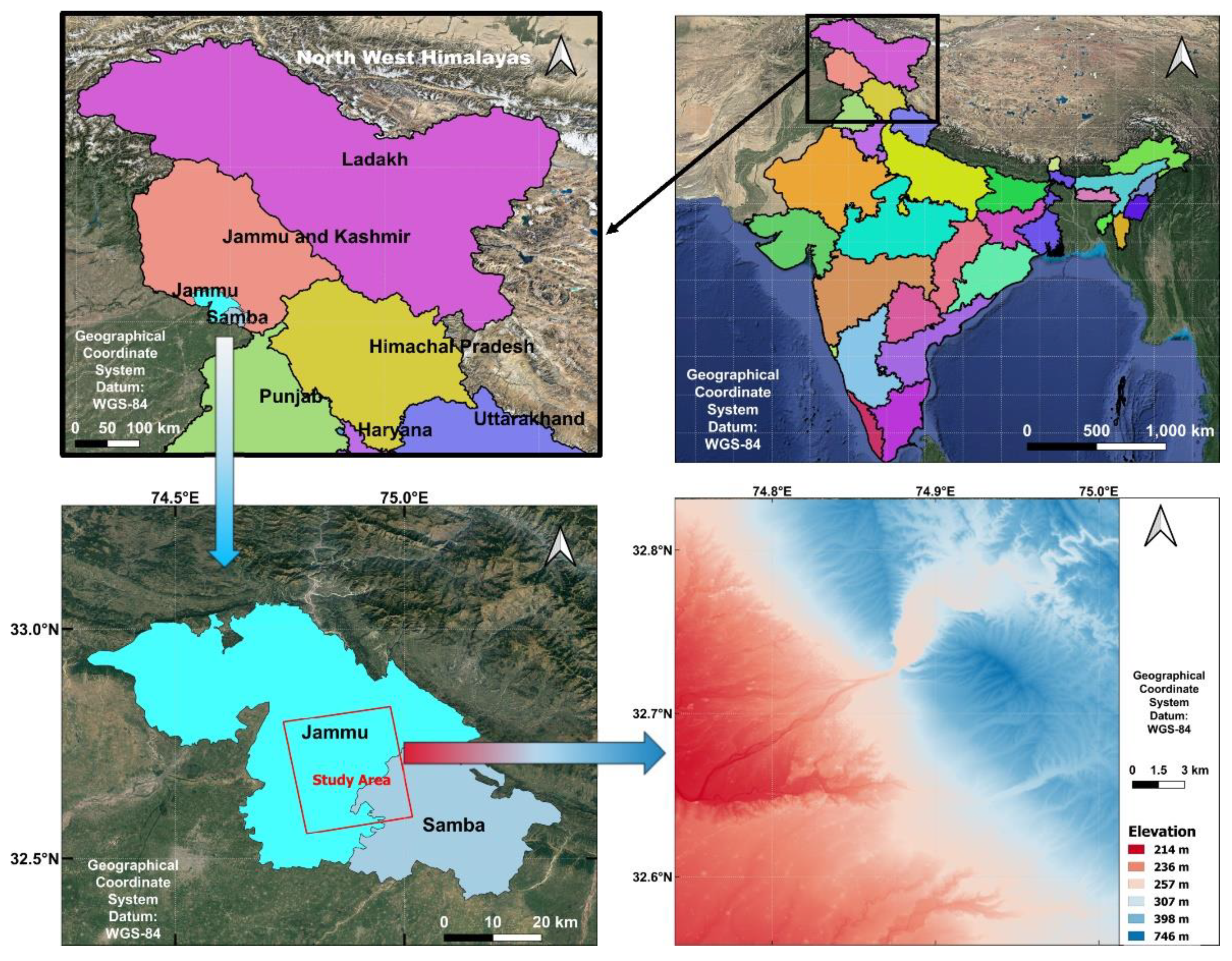


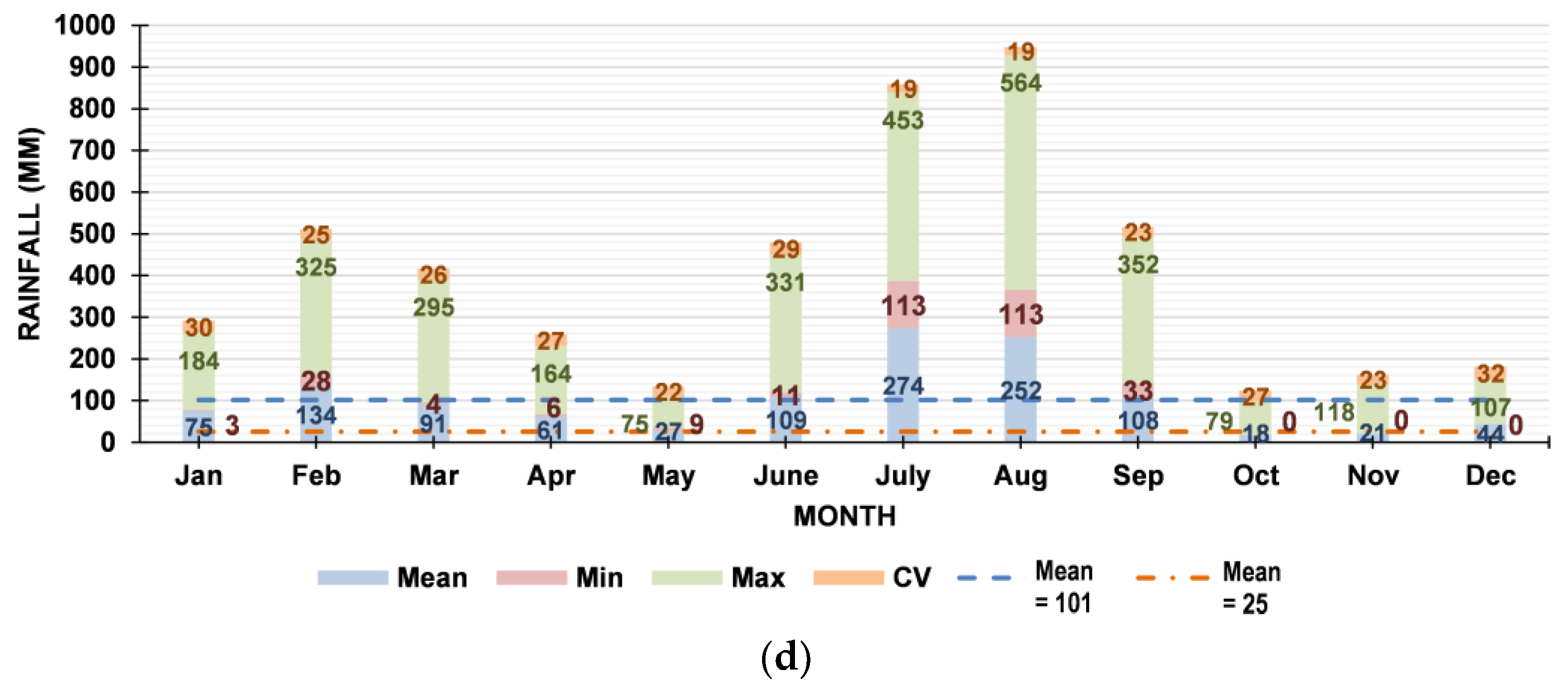
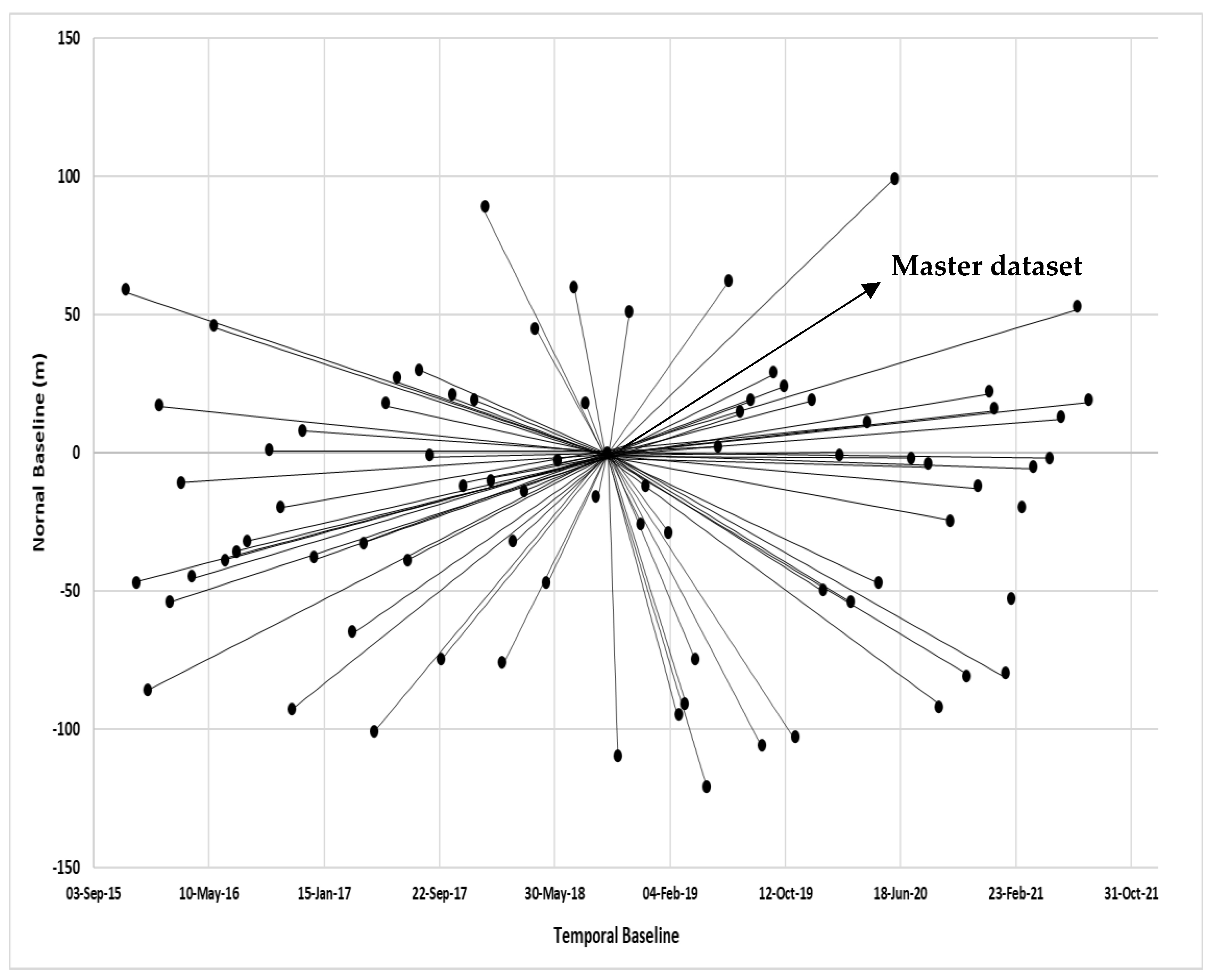
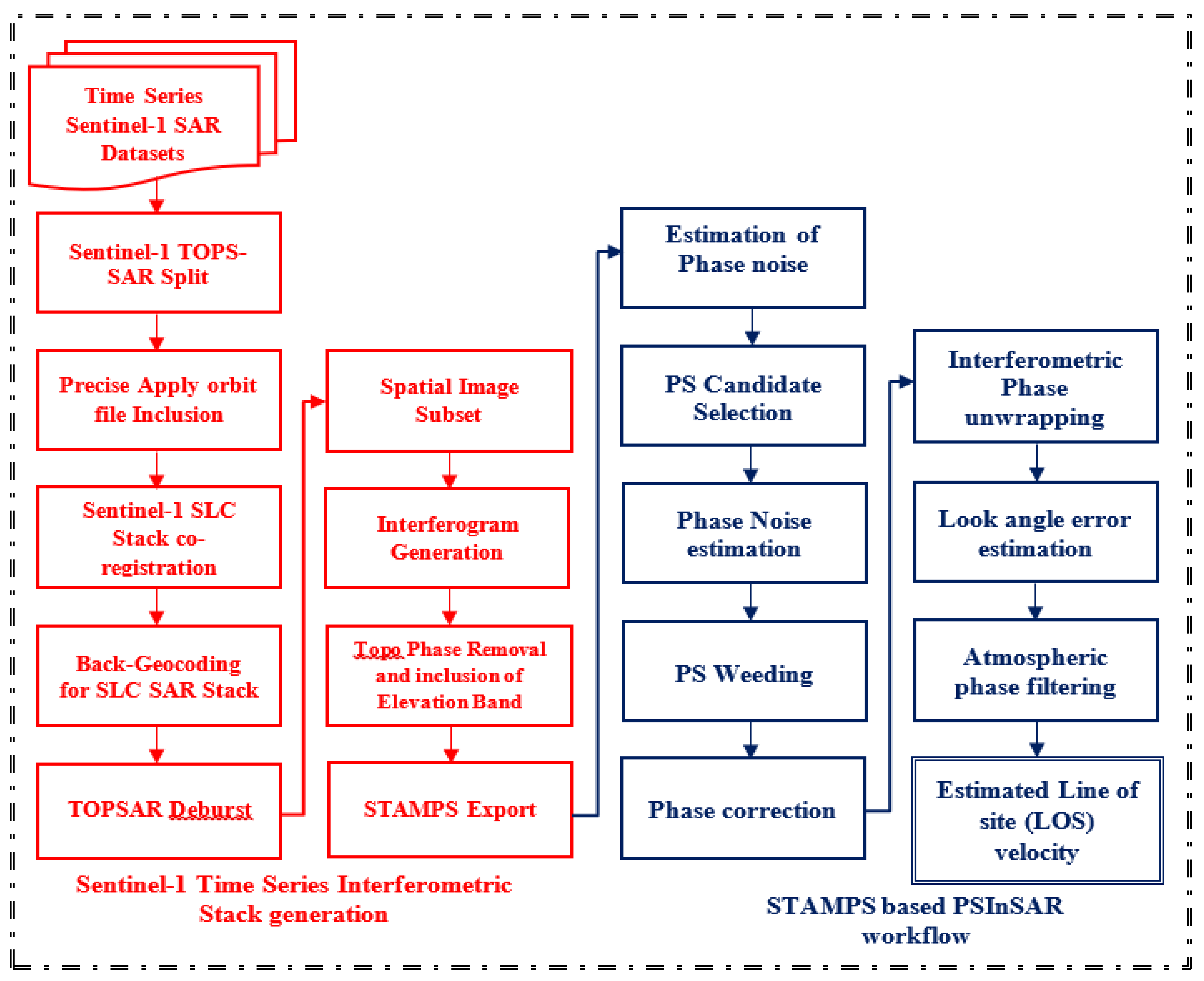
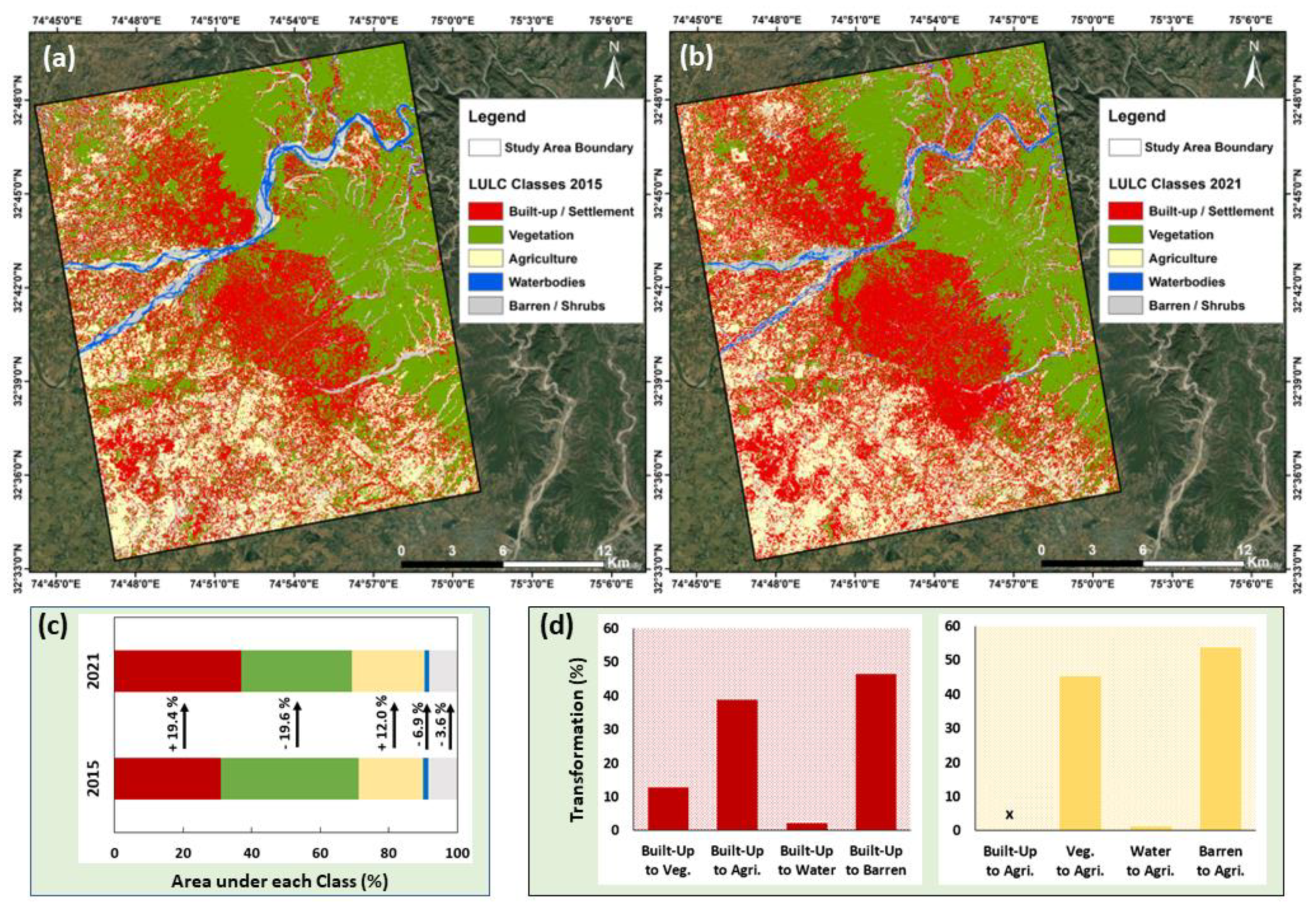

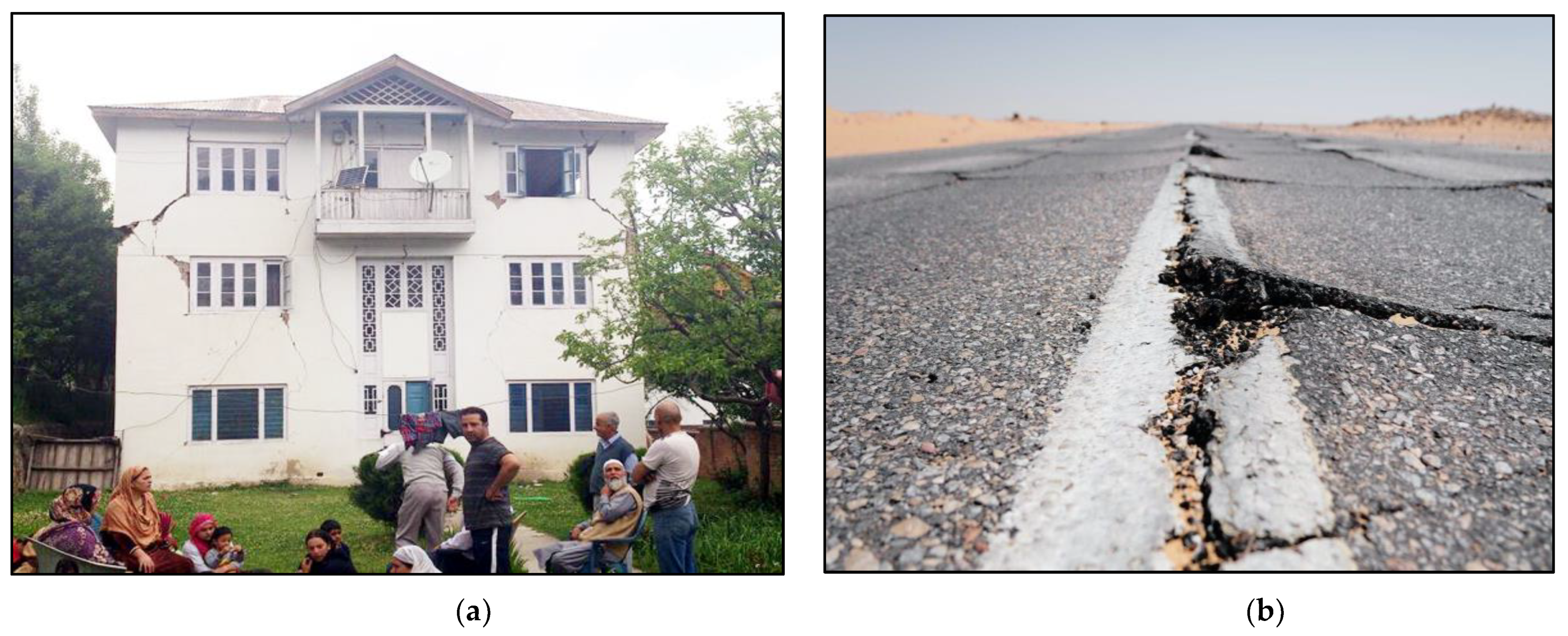
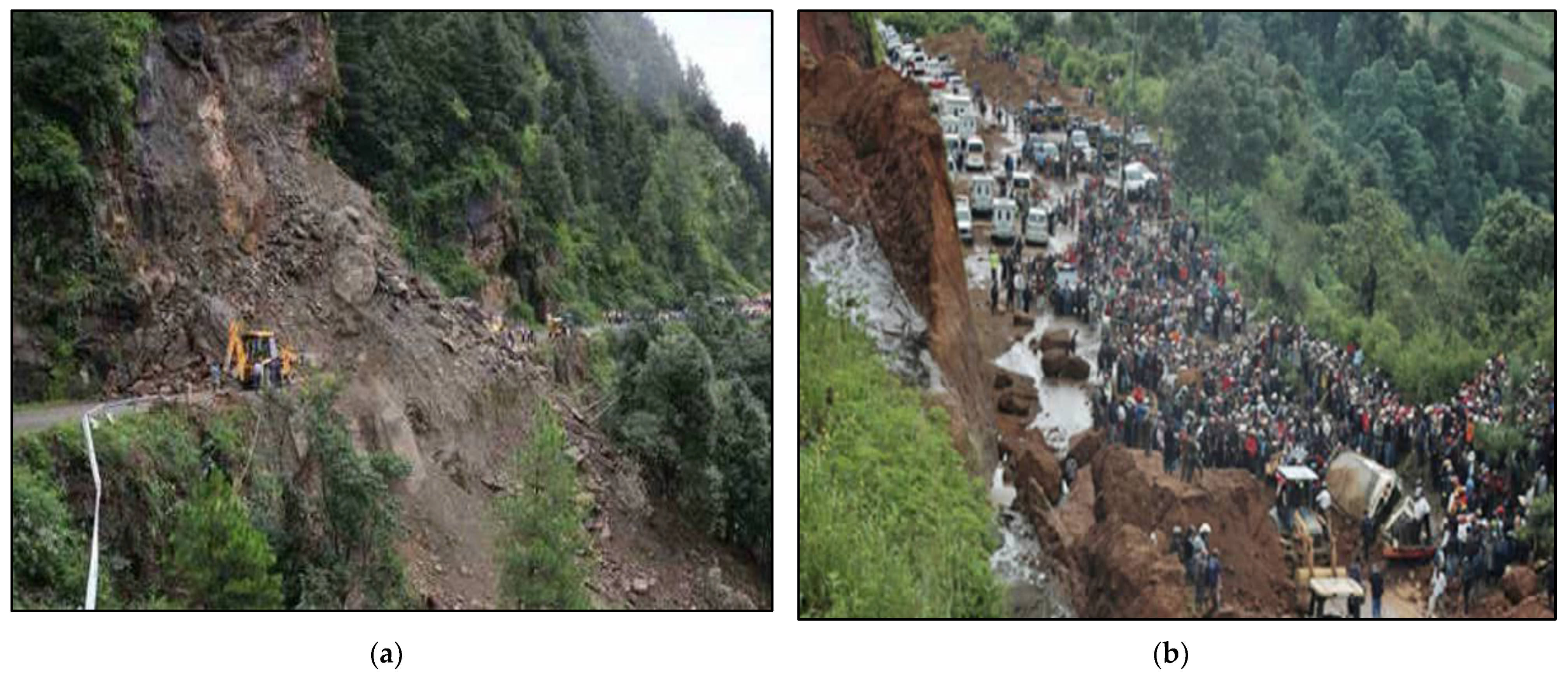

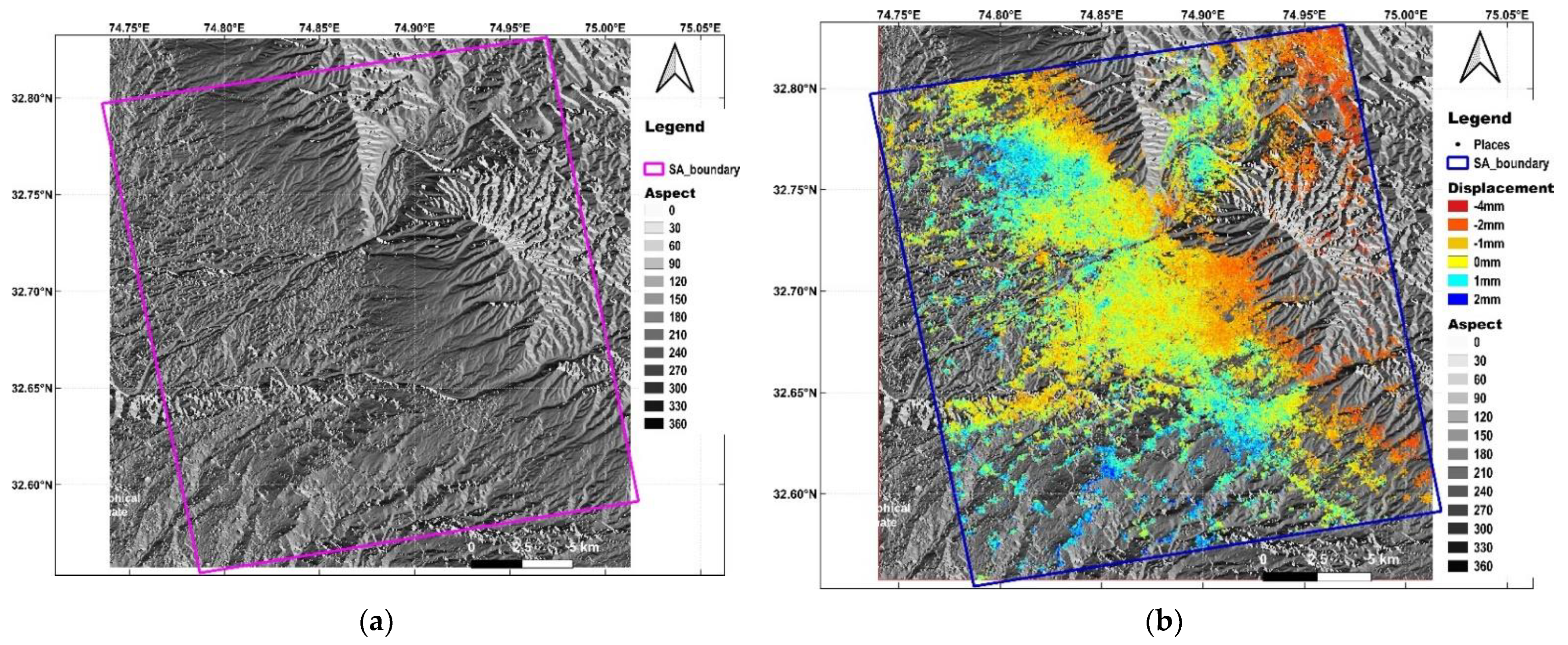

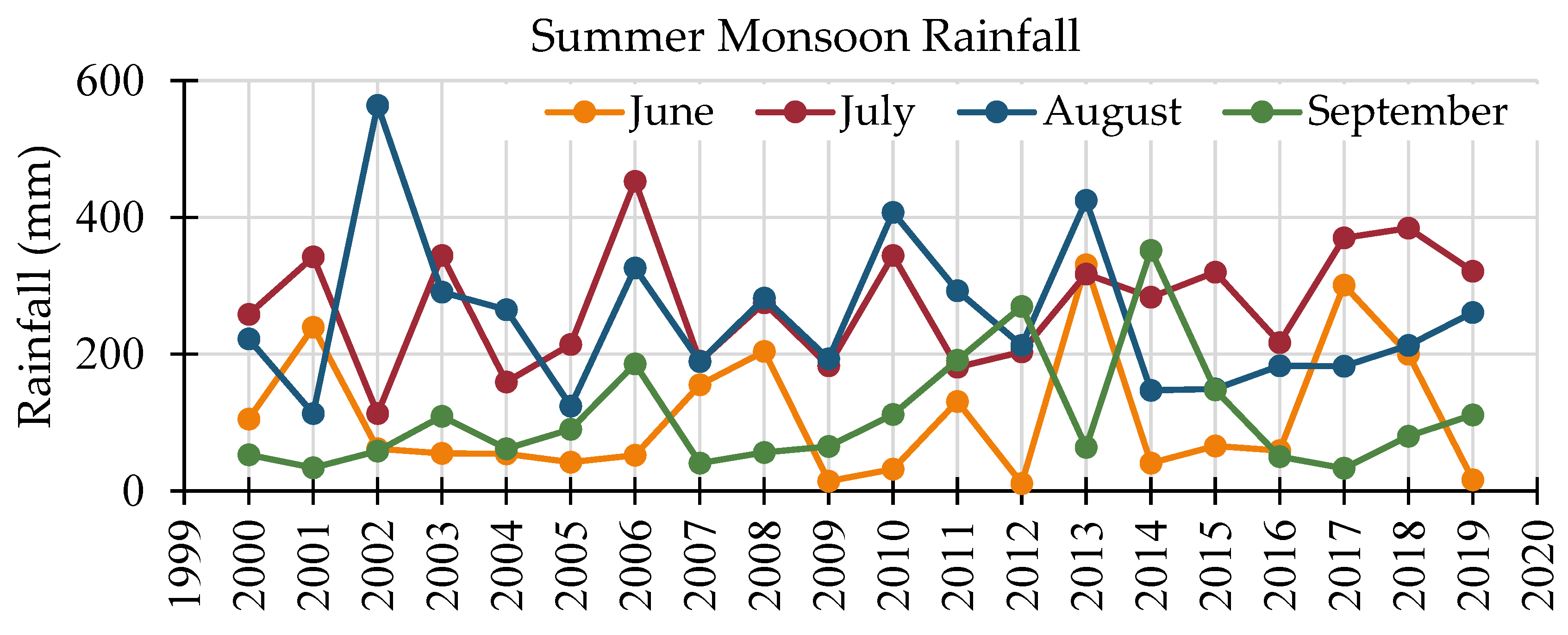
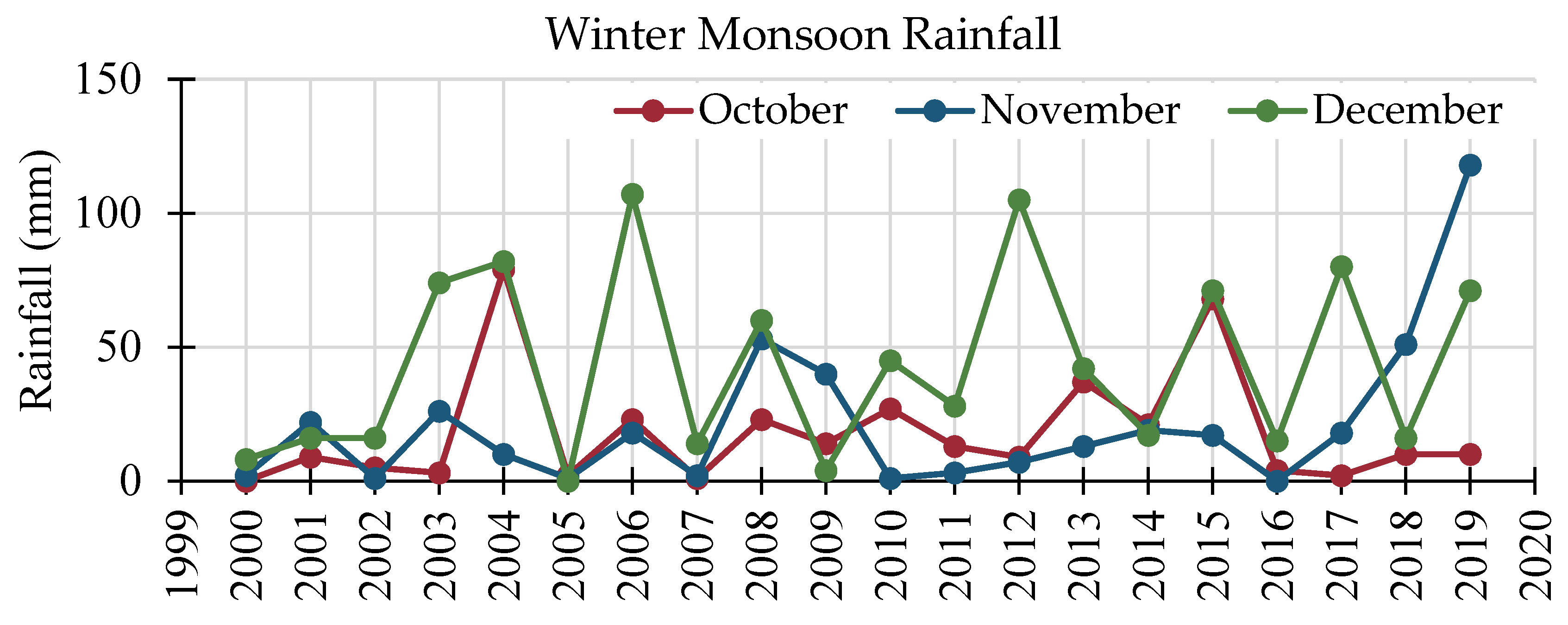
| S. No. | Date of Earthquake | Magnitude on Richter Scale | Epicenter Location |
|---|---|---|---|
| 1 | 1 May 2013 | 5.8 | Bhaderwah |
| 2 | 25 November 2013 | 3.2 | Bhaderwah |
| 3 | 8 July 2017 | 5.2 | J&K |
| 4 | 24 August 2017 | 5.0 | J&K |
| 5 | 12 September 2018 | 4.6 | Kargil |
| 6 | 9 June 2020 | 3.9 | Srinagar |
| 7 | 16 June 2020 | 5.8 | Tajikistan |
| 8 | 26 September 2020 | 4.5 | J&K |
| 9 | 5 February 2022 | 5.7 | Afghanistan-Tajikistan border |
| 10 | 10 February 2022 | 3.8 | Gilgit-Baltistan |
| 11 | 18 April 2022 | 3.4 | Kishtwar |
| 12 | 14 June 2022 | 4.7 | Afghanistan |
| 13 | 23 August 2022 | 3.9 | Katra |
| 14 | 23 August 2022 | 2.6 | Doda |
| 15 | 23 August 2022 | 2.8 | Udhampur |
| 16 | 23 August 2022 | 2.9 | Udhampur |
| 17 | 24 August 2022 | 3.9 | Katra |
| 18 | 24 August 2022 | 2.6 | Doda |
| 19 | 25 August 2022 | 4.1 & 3.2 | Katra |
| 20 | 27 August 2022 | 2.9 | Bhaderwah |
| 21 | 27 August 2022 | 3.4 | Doda |
Publisher’s Note: MDPI stays neutral with regard to jurisdictional claims in published maps and institutional affiliations. |
© 2022 by the authors. Licensee MDPI, Basel, Switzerland. This article is an open access article distributed under the terms and conditions of the Creative Commons Attribution (CC BY) license (https://creativecommons.org/licenses/by/4.0/).
Share and Cite
Awasthi, S.; Varade, D.; Bhattacharjee, S.; Singh, H.; Shahab, S.; Jain, K. Assessment of Land Deformation and the Associated Causes along a Rapidly Developing Himalayan Foothill Region Using Multi-Temporal Sentinel-1 SAR Datasets. Land 2022, 11, 2009. https://doi.org/10.3390/land11112009
Awasthi S, Varade D, Bhattacharjee S, Singh H, Shahab S, Jain K. Assessment of Land Deformation and the Associated Causes along a Rapidly Developing Himalayan Foothill Region Using Multi-Temporal Sentinel-1 SAR Datasets. Land. 2022; 11(11):2009. https://doi.org/10.3390/land11112009
Chicago/Turabian StyleAwasthi, Shubham, Divyesh Varade, Sutapa Bhattacharjee, Hemant Singh, Sana Shahab, and Kamal Jain. 2022. "Assessment of Land Deformation and the Associated Causes along a Rapidly Developing Himalayan Foothill Region Using Multi-Temporal Sentinel-1 SAR Datasets" Land 11, no. 11: 2009. https://doi.org/10.3390/land11112009
APA StyleAwasthi, S., Varade, D., Bhattacharjee, S., Singh, H., Shahab, S., & Jain, K. (2022). Assessment of Land Deformation and the Associated Causes along a Rapidly Developing Himalayan Foothill Region Using Multi-Temporal Sentinel-1 SAR Datasets. Land, 11(11), 2009. https://doi.org/10.3390/land11112009











